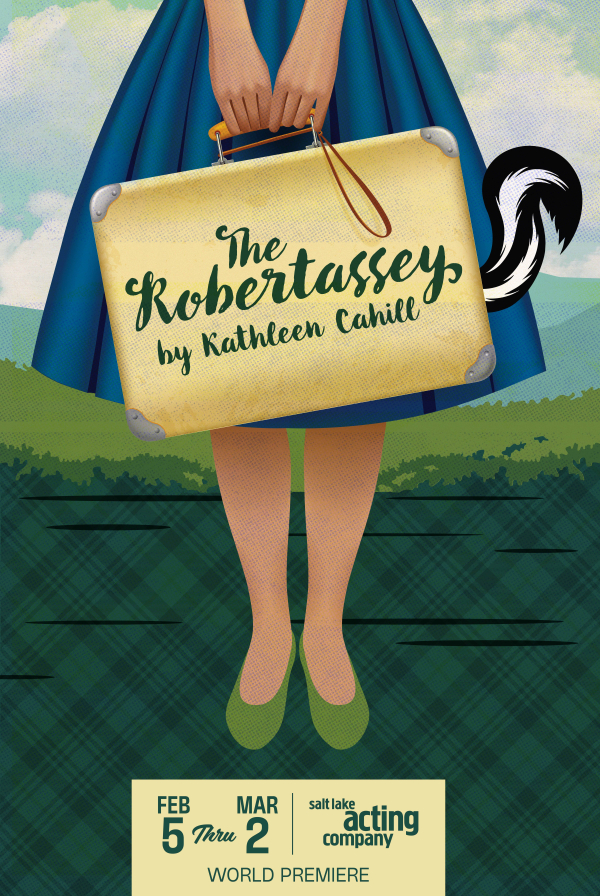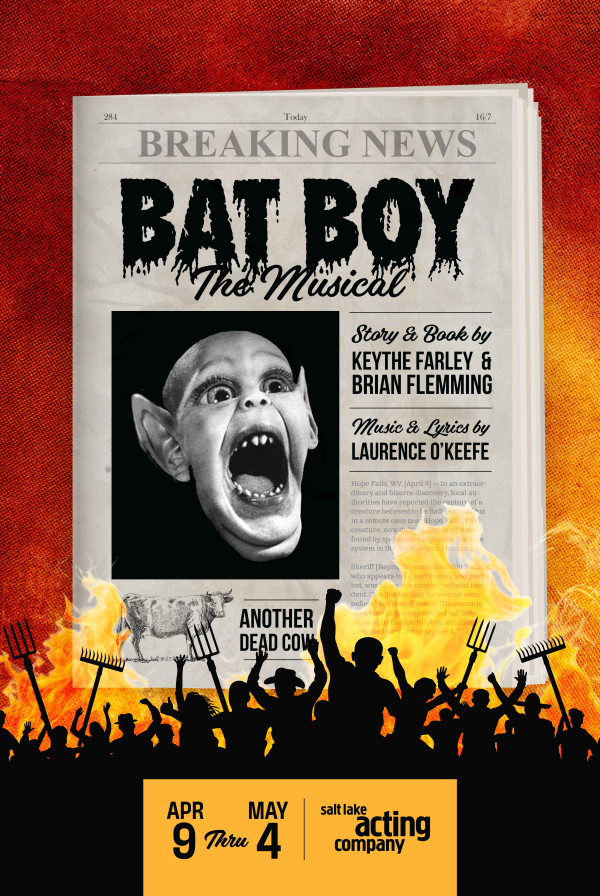In Salt Lake world premiere, Kathleen Cahill’s ‘Harbur Gate’ gives a voice to veterans’ stories
By barbara M. Bannon Special to The Tribune
Utah playwright Kathleen Cahill is admittedly "eclectic" in her interests.
So it's not surprising that the inspiration for her new play, "Harbur Gate," about to make its world premiere at Salt Lake Acting Company, came from a radio news story, a documentary film and a Winslow Homer painting.
Or that "Harbur Gate" delves into an array of themes and issues, from women soldiers in the combat zone to military sexual trauma to gender roles to struggles with grief and journeys both literal and metaphorical.
Cahill recalls being intrigued by a radio report about the military becoming gender neutral, meaning women could be sent into battle. "That struck me as a momentous thing," she says, "because in the history of plays about war, the men are the warriors and the women are the grievers. That's been the way it is forever since the Greeks."
Then Cahill says she saw Kirby Dick's documentary "The Invisible War" about rape in the military, which premiered at the 2012 Sundance Film Festival, "and that had a very deep effect on me, probably more than I even realized at the time."
Finally, she heard that Winslow Homer's painting "Veteran in a New Field" was part of a traveling exhibition of war paintings and got to see it at the Metropolitan Museum in New York. In the painting, a Civil War veteran is harvesting wheat in a field with a scythe; the image seemed highly metaphorical, with the scythe associated with death and the wheat representing the biblical harvest of human souls.
To research "Harbur Gate," Cahill spent a year interviewing female veterans and sat in on two support groups at the VA Medical Center in Salt Lake City. One was for sufferers of military sexual trauma, and the other focused on LGBT veterans who felt traumatized by their military service.
"Sitting in on those groups literally changed my life," she says. "These people really suffered because they don't fit into the gender mold, and the military is such an übermasculine place. So it just seems to me that all this stuff about gender that we're going through now is represented in primary colors in the military."
"Harbur Gate" consists of three interconnected plays linked by an incident involving a convoy on the road from Harbur Gate, a U.S. military base on the Turkish/Iraqi border, to Mosul during the Iraq War. Each play has two characters, a man and a woman.
The play opens with "Orpheus," set in 2005, as two Army medics — Chad (Matthew Sincell) and Carey (Natalia Noble) — are about to receive Purple Hearts for being wounded in battle.
The title piece takes place in 2004 and is the only part of the overall play set in Iraq. Marine Sgts. Vinnie Russo (Topher Rasmussen) and Alyson Moss (Cassandra Stokes-Wylie) are driving a truck in the convoy to Mosul and engaging in what Cahill describes as a "battle of the sexes: his attitudes about her being a Marine and her attitudes about having to deal with that all the time."
And finally, in "Veteran in a New Field," set in 2007, Michelle (Ariana Broumas), a veteran suffering from PTSD, finds comfort when she meets John (Lane Richins), a blind painter, in the park.
Cahill took "Harbur Gate" to SLAC to apply for a National New Play Network commission, which she received. It was chosen for the first Playwrights' Lab at SLAC in 2015, when David Kranes teamed Cahill with New York director Tamilla Woodard, who has been with the project ever since. "Harbur Gate" also received an Edgerton Foundation award that gave it two extra weeks of rehearsal, so the entire cast was able to sit in on support groups at the VA and hear veterans' stories firsthand. "It put reality into the characters that they're playing," Cahill says.
Another plus was having a military veteran — Broumas, who served six years as a Marine — in the play's cast. Cahill and Woodard say her adjustments were invaluable.
"We were able to do things that were more culturally Marine Corps that you wouldn't know unless you were in," says Broumas.
One thing that struck Woodard and Broumas is that the veterans they met in the support groups — no matter how bad their experiences — would serve again and would advise others to serve. "There's still a love there on some level, even if it's tainted and ugly," Broumas says. "A lot of those women or men were still proud of their service. It's interesting and beautiful that they were able to still have that thing inside them that they possessed when they graduated from boot camp. I felt it myself. It's very self-identifying and meaningful, and it comes after a lot of hard work and sacrifice."
Woodard adds: "It's the participation of the individual in the larger society of the military that each veteran we talked to said they were seeking in their own lives, a place to belong: this idea of camaraderie, this idea of higher purpose, this idea of fraternity, the safety of that thing, the pride of that thing, the strength of that thing."
Broumas says she feels a sense of responsibility to the veterans whose stories inform "Harbur Gate."
"These are people who can't speak out when they're in those positions; you're subject to a code," she says. "The more the story comes out, the more military leadership can take an active role in making changes."
Woodard sees "Harbur Gate" as a chance for audiences to connect with people and experiences that may be very different from their own: "We're separated by our experiences, traumatic or delightful, but we have the power to empathize, and that empathy and compassion can help us make things better together. … I'm hoping that we really offer a place of empathy and compassion for the stories that these veterans have told Kathleen and have shared with us and make a bridge to the audience. I hope that people feel a sense of redemption is possible even when you've lost so much."














